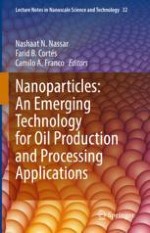2021 | OriginalPaper | Chapter
11. Double Purpose Drilling Fluid Based on Nanotechnology: Drilling-Induced Formation Damage Reduction and Improvement in Mud Filtrate Quality
Authors : Johanna V. Clavijo, Leidy J. Roldán, Diego A. Castellanos, German A. Cotes, Ángela M. Forero, Camilo A. Franco, Juan D. Guzmán, Sergio H. Lopera, Farid B. Cortés
Published in: Nanoparticles: An Emerging Technology for Oil Production and Processing Applications
Publisher: Springer International Publishing
Activate our intelligent search to find suitable subject content or patents.
Select sections of text to find matching patents with Artificial Intelligence. powered by
Select sections of text to find additional relevant content using AI-assisted search. powered by
